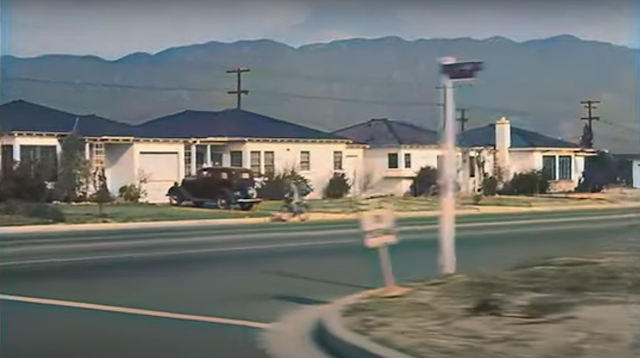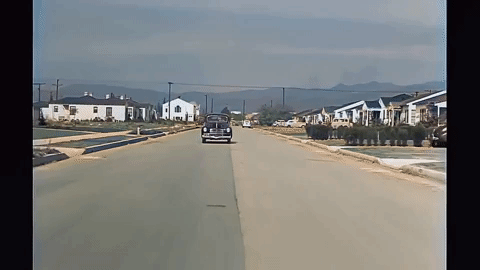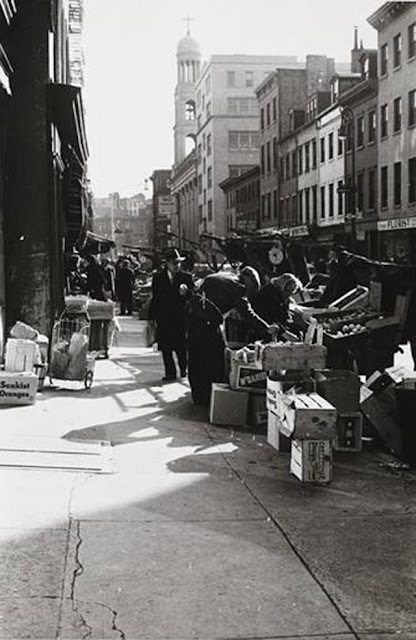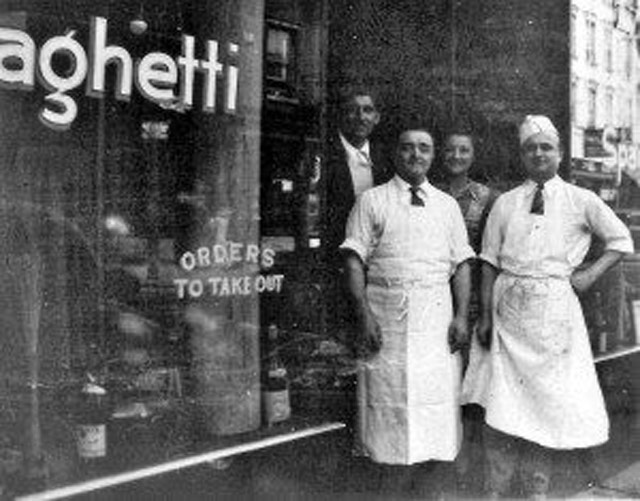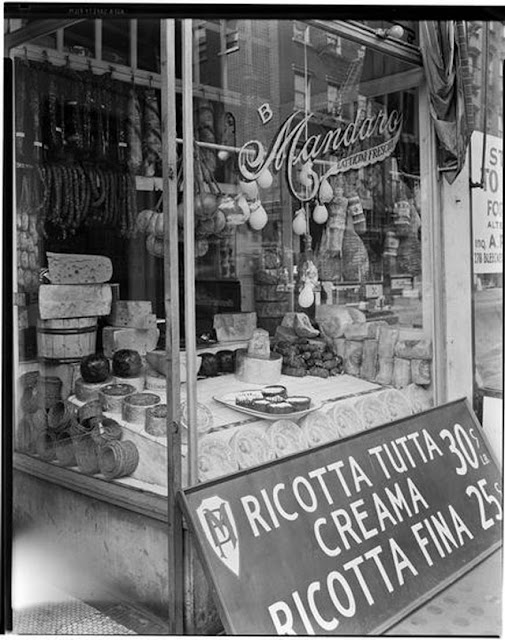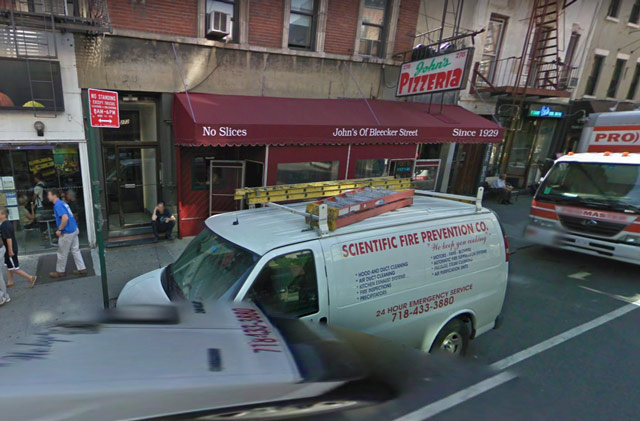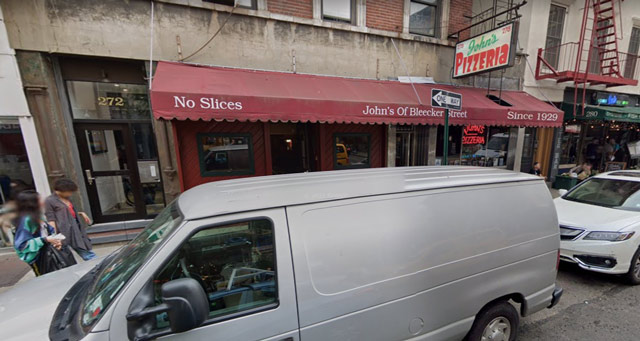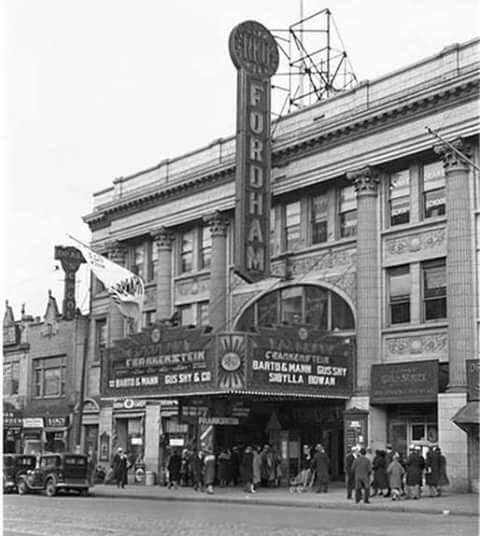A Random Drive Through Sherman Oaks In The 1940s
Most of my articles are about New York City because it is beautifully documented and full of history, much of which survives to this day. It is fun to reflect on the Big Apple and its ever-present past.
But today we switch things up and go to my second-favorite locale, Los Angeles and its environs. Let's take a brief ride through Sherman Oaks sometime in 1949 or the early 1950s (there is some debate about exactly when this footage was taken). We are going to jump around a bit in the neighborhood, but basically, we are in the vicinity of Greenleaf Street east of the highway.
We'll start our ride on Greenleaf Street heading west just past Cedros Street. Up ahead on the right side of the road, not quite in sight yet, as the road swerves left, is the Sherman Oaks Elementary School.
 |
| Greenleaf Street, heading west, 1949. |
The school is still there, but now it is called the Sherman Oaks Charter School.
 |
| Greenleaf Street, heading west, August 2022 (Google Street View). |
We continue down Greenleaf Street, a nice suburban street then and now.
 |
| Greenleaf Street, heading west, 1949. |
There is the school fence on our right, behind that driveway. Note the lampost over on the left.
 |
| Greenleaf Street, heading west, August 2022 (Google Street View). |
And above is the same spot today, with the fence over there on the right beyond the (greatly widened) driveway across from our friend the eternal lampost.
 |
| Saugus Avenue and Greenleaf Street, Sherman Oaks, Los Angeles, ca. 1949. |
Above is the corner of Saugus Avenue and Greenleaf Street in Sherman Oaks, looking west toward the San Diego Freeway ("the 405" to you Californians), in 1949. Is that the same tree there on the corner? Sure looks like the tree has bent the same way, though admittedly it has straightened out some over the decades.
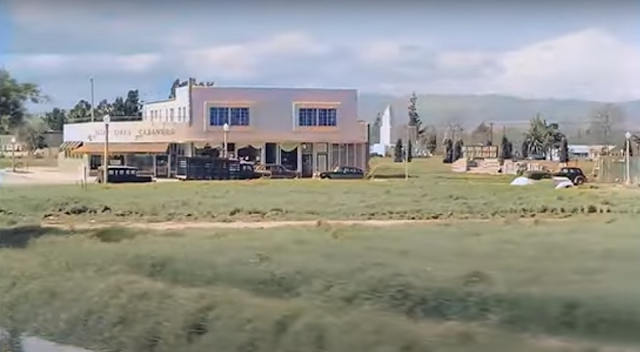 |
| Valley Oaks Cleaners off Saugus and Sepulveda, the future site of the current Whole Foods. |
The Valley Oaks Cleaners is over to the right, which begat the Westward Ho Market, which begat the current Whole Foods on Sepulveda.
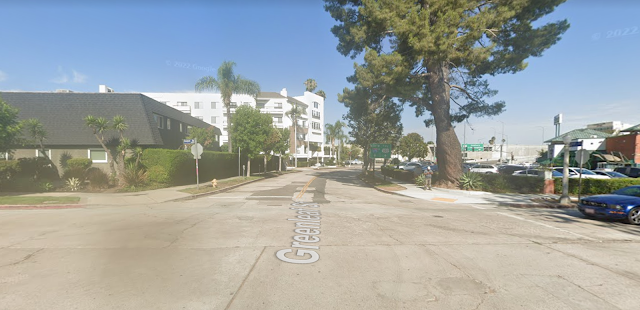 |
| Saugus Avenue and Greenleaf Street in Sherman Oaks in August 2022 (Google Street View). |
And above we have the exact location in August 2022. The San Diego Freeway is still there, but it looks a bit different these days. The Whole Foods site is off to the right, mostly out of sight here.
 |
| Greenleaf Street at Kester Avenue, northeast corner, ca. 1949. |
Back up on Greenleaf Street, above, we pass a house on the corner of Greenleaf Street at Kester Avenue. Below, is the exact location recently.
 |
| Greenleaf Street at Kester Avenue, August 2022 (Google Street View). |
Below is the same corner in 1949, but we see the other side of Greenleaf Street in a more straight-ahead shot. Notice the fire hydrant, telephone pole, and other street features on the left.
 |
| Greenleaf Street, looking west, 1949. |
Below, is the same view in August 2022.
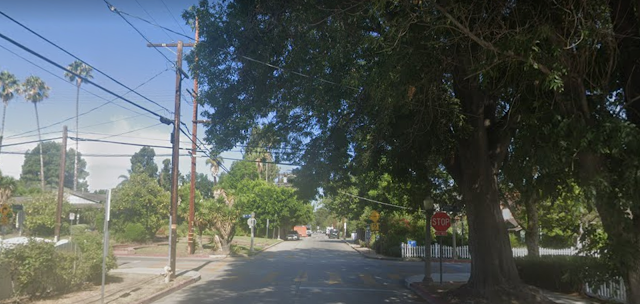 |
| Greenleaf Street looking west, August 2022 (Google Street View). |
Below is Greenleaf Street and Noble Avenue looking west toward the freeway.
 |
| Greenleaf Street at Noble Avenue, looking west. |
Below is the corner of Greenleaf and Noble looking in the same direction. Note the similarities in the streetlights and telephone poles - hard to say if some of them are the same, perhaps the streetlamps are. Cars from different eras are parked in the exact same spot - the more things change, the more they stay the same. Also, in 1949 they were not "Stop" signs, they were "Slow" signs - and painted a different color - though they had the same shape and thus would be confusing for a modern driver taken back to that time.
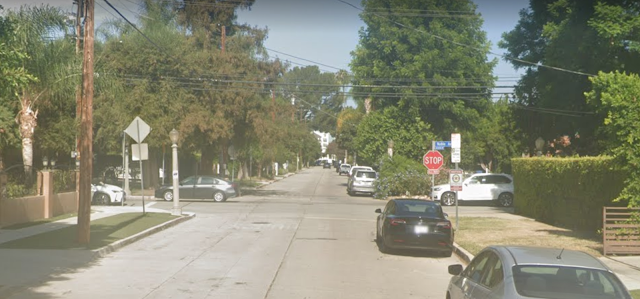 |
| Greenleaf at Noble looking west, August 2022 (Google Street View). |
Below is a 1949 image of Saugus Avenue looking south - for orientation, the San Diego Freeway is out of sight over to the right.
 |
| Saugus Avenue looking south, 1949. |
Below is the same street scene from August 2022. As in the other recent shots, the old lamposts - or, if not the same, identical facsimiles - are in the same places.
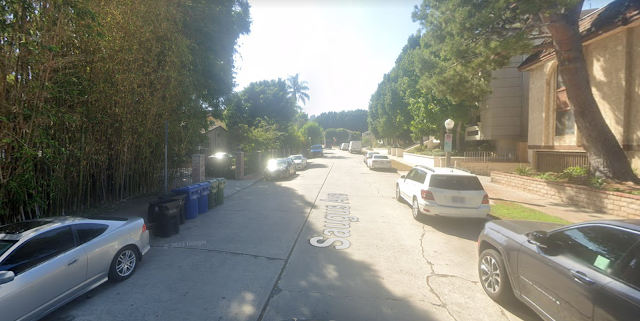 |
| Saugus Avenue looking South, August 2022 (Google Street View). |
Our last comparison is a bit far from these previous ones. In the ca. 1949 image below, you will see West Victory Boulevard looking east as we travel down North Maple Street heading south.
This location may not be as obvious as some of the others. However, in the recent image below, we can pick out several details from the 1949 image. Specifically, you can see the prominent white chimney that remains unaltered after over 70 years. Three houses to its left, note the white garage that sticks out toward the street, the one with the car in front of it in the image above compared with the recent image of the garage in between the cars parked sideways below. Ladies and gentlemen, we have a match!
 |
| West Victory Blvd at North Maple Street, Los Angeles, California, May 2017 (Google Street View). |
This is intended to be educational to show how a neighborhood develops over time. By closely examining current structures, you can unearth enduring links to the past, sometimes where you least expect to find them.
You still may be wondering, "Is there a point to all this?" Well, no, really there isn't. There is no point if you do not see one. It is just, as I said earlier, a nice drive through a suburban neighborhood at two different times in history. Nothing to it at all, aside from my constant refrain in these slices of history - that the more things change, the more they stay the same. Many of the things we take for granted were there long before we were here, and they will still be there long after we have moved along. We may not know exactly what will outlast us - but much of what we see will. Enjoy them while it's our time, as soon enough it will be someone else's turn to ignore the things that outlast us.
The video from which I picked the 1949 images is below. Thanks for visiting.
2023
